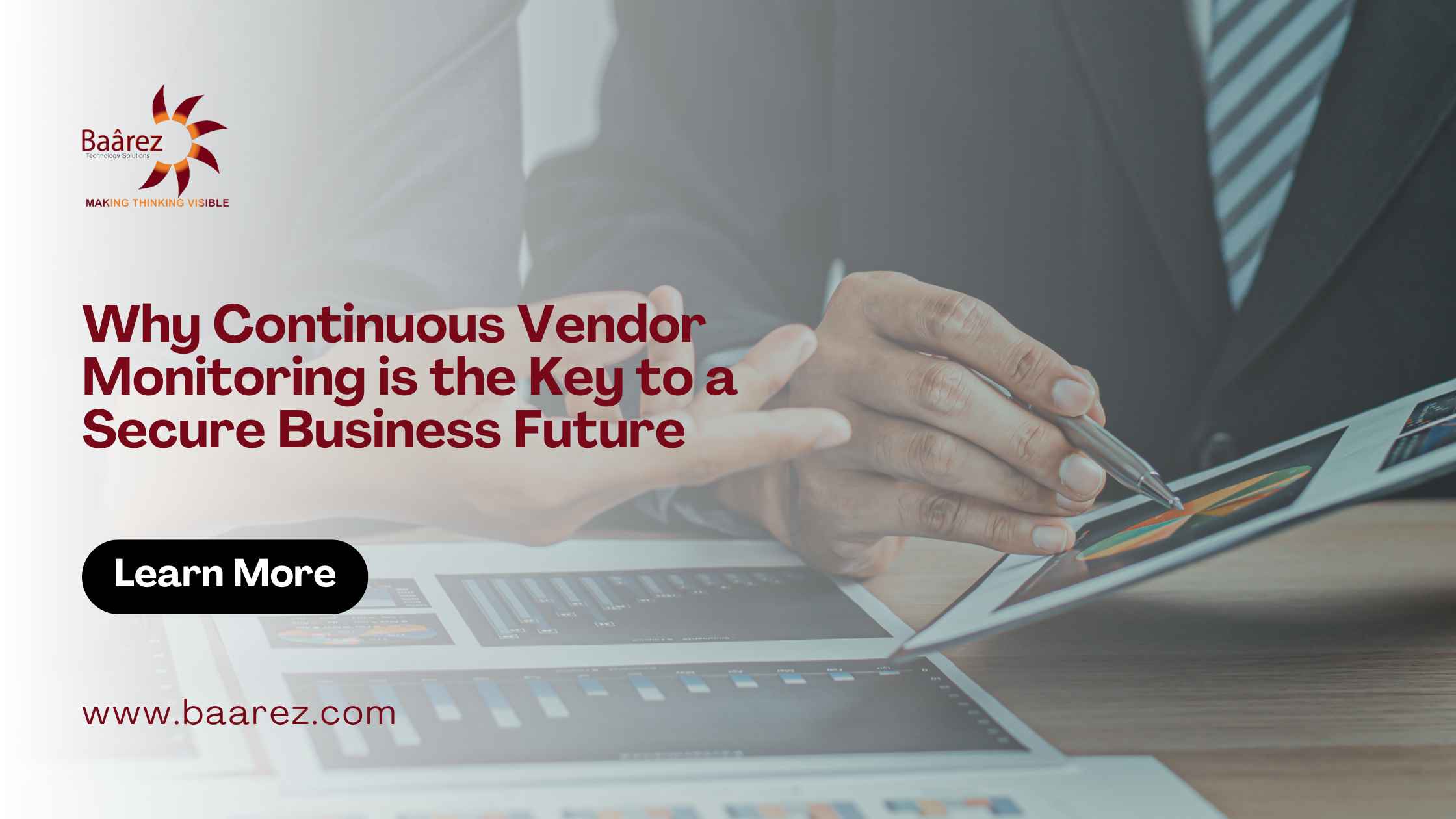
As businesses expand and evolve, the number of third-party vendors they collaborate with also increases. These vendors, whether companies or individuals, supply goods and services that are vital to a business’s operations but are not part of the business itself. While third-party vendors can offer significant benefits such as cost savings, increased efficiency, and expanded capabilities, they also introduce potential risks. Continuous monitoring of these vendors, also known as Third-Party Risk Management (TPRM), is crucial for identifying and managing risks in real-time. In this article, we explore the importance of continuous vendor monitoring, the benefits it provides, and the potential risks businesses must address.
Table of Contents
ToggleThe Importance of Monitoring Third-Party Vendors
Ensuring Regulatory Compliance
Regulatory compliance is a cornerstone for businesses operating in heavily regulated industries like healthcare, finance, and energy. These sectors are bound by strict laws and standards that vary by region. Non-compliance can lead to severe consequences, including:
- Financial Penalties: Violating regulations can result in significant fines that impact a company’s profitability. These penalties are designed to discourage future violations, with the amount varying based on the severity of the infraction and the specific laws breached. For instance, non-compliance with anti-money laundering regulations in the financial sector can lead to multi-million-dollar fines, depleting resources that could otherwise fuel business growth and innovation.
- Legal Repercussions: Companies that fail to comply with applicable laws face the risk of legal actions, ranging from civil lawsuits to criminal prosecutions. Defending against such actions is not only costly but also time-consuming, diverting focus from core business operations. Legal outcomes may include court-ordered sanctions or mandatory changes to business practices, further complicating operations.
- Reputational Damage: Non-compliance can severely damage a company’s reputation, leading to a loss of customer trust and loyalty. In today’s digital age, news of regulatory violations can spread rapidly, exacerbating the impact and making recovery more difficult. Reputational damage can erode market position and competitive advantage, resulting in decreased sales and challenges in forming new partnerships.
Since businesses often rely on third-party vendors for essential services or products, it’s vital that these vendors also comply with relevant regulations. Monitoring vendor compliance is not just about aligning with regulatory demands; it’s about protecting the business from indirect compliance risks. This includes regular audits, compliance checks, and updating vendor contracts to ensure adherence to all applicable laws. By doing so, businesses can mitigate compliance risks and maintain a strong regulatory posture across their operations.
Mitigating Cybersecurity Threats
In the digital era, cybersecurity is a critical concern for all businesses. Vendors often have access to a company’s internal systems, making them potential weak points in the cybersecurity framework. If a vendor lacks robust security practices, they become vulnerable to cyber-attacks, which can compromise the main business’s data and systems. Monitoring vendors for cybersecurity threats is therefore essential. This involves conducting regular security assessments, reviewing their cybersecurity policies, and ensuring they have effective incident response strategies. Businesses should also require vendors to undergo third-party cybersecurity audits and share the results, ensuring a strong security posture across the supply chain.
Managing Operational Risks
Operational risks from third-party vendors can range from minor disruptions to major interruptions that could halt business operations. These risks can stem from supply chain issues, technical failures, or the financial instability of the vendor. Monitoring these risks requires a thorough understanding of the vendor’s operational procedures and financial health. Establishing clear communication channels and regularly reviewing contingency and business continuity plans with vendors are essential steps. Diversifying suppliers and vendors can also prevent over-reliance on a single source for critical business functions. By proactively monitoring these aspects, businesses can swiftly address and mitigate risks, ensuring continuous operations.
The Benefits of Continuous Vendor Monitoring
Early Detection of Risks
Real-time monitoring of third-party vendors is crucial for the early detection of risks that could escalate into significant issues. By implementing continuous and proactive surveillance, businesses can quickly identify anomalies, disruptions, or non-compliance events that may affect operations or reputation. This early detection allows for swift corrective action, minimizing potential damage. Advanced monitoring techniques, such as automated alerts, dashboard monitoring, and regular reports, enhance a company’s ability to manage and mitigate risks effectively.
- Automated Alerts: These systems notify businesses immediately of potential risks or anomalies detected in third-party services. Automated alerts analyze data patterns and flag deviations from the norm, allowing for prompt action to mitigate risks before they escalate.
- Dashboard Monitoring: Interactive dashboards provide a real-time overview of vendor performance, highlighting key performance indicators relevant to the company’s risk profile. This consolidated view allows for quick detection of performance dips or compliance issues.
- Regular Reports: Requiring regular reports from vendors provides a systematic approach to monitoring and assessing their operations. These reports offer insights into operational processes, achievements, and any challenges encountered, helping businesses maintain oversight of vendor health and compliance.
Enhanced Risk Mitigation Strategies
Continuous monitoring of vendors enables businesses to refine and improve their risk mitigation strategies. With ongoing assessments of vendor operations and risk exposures, companies can adapt their strategies to better align with the changing dynamics of vendor relationships. This includes identifying supply chain vulnerabilities, evaluating current risk controls, and updating contingency plans to address emerging threats. Regular interactions with vendors to discuss risk profiles and mitigation measures ensure alignment and proactive management of potential issues. This approach helps build a more resilient infrastructure, integrating robust risk management practices that accommodate evolving risk landscapes and regulatory requirements.
Informed Decision-Making
Effective monitoring of third-party vendors provides businesses with critical data and insights essential for informed decision-making. This oversight allows companies to continuously assess vendor performance, gauge compliance with contractual obligations, and identify areas for improvement. The intelligence gathered through monitoring highlights operational strengths and weaknesses, offering opportunities for optimization and innovation. Understanding the risk landscape and performance metrics associated with vendors informs strategic decisions, such as contract renewals, vendor selections, or competitive bidding processes. By having a comprehensive view of vendor impacts on various business aspects, decision-makers can make accurate, data-driven choices that align with long-term goals and risk management strategies, ultimately enhancing vendor relationships and supporting sustained business growth.
Understanding Third-Party Vendor Risks
Data Breaches
Data breaches pose a significant risk when businesses engage with third-party vendors, particularly those handling sensitive information. Vendors with access to company data increase the attack surface for cyber threats, making them attractive targets for hackers. The consequences of a data breach can be severe, leading to the loss of customer information, intellectual property, or financial data. Such breaches incur substantial costs, including fines, legal fees, and remediation, while also eroding customer trust and damaging the company’s reputation. To mitigate this risk, businesses must enforce stringent data security protocols and ensure vendors adhere to the same high standards, including robust encryption, regular security audits, and continuous monitoring of data access points.
Supply Chain Disruptions
Third-party vendors are crucial to many business supply chains, but they can also introduce significant risks. Disruptions at the vendor level, such as production delays, logistical issues, or quality failures, can have a ripple effect throughout the entire supply chain. These disruptions can lead to operational delays, increased costs, and compromised service levels, ultimately impacting a business’s ability to meet customer demands. To safeguard against these risks, businesses should conduct thorough due diligence before onboarding vendors and continuously monitor their performance. Diversified sourcing strategies and maintaining a buffer inventory are practical steps to mitigate the impact of single points of failure. Establishing clear communication channels and contractual agreements that outline expected service levels and contingency measures is essential.
Financial Risks
Engaging with third-party vendors can expose a business to various financial risks, particularly if a vendor faces economic difficulties or goes bankrupt. Such financial instabilities can disrupt the supply of critical goods or services, leading to unexpected costs to secure alternatives. Financial distress in the supply chain can also affect project timelines and overall financial planning. To manage these risks, businesses should perform regular financial health checks on their vendors, including reviewing credit scores, financial statements, and market conditions that may impact their stability. Contractual safeguards, such as performance bonds or advance payment guarantees, can further protect a business’s financial interests.
Final Thoughts
Monitoring third-party vendors is critical for businesses to identify and manage risks associated with these partnerships. By implementing a comprehensive TPRM program, businesses can reduce the risks of data breaches, supply chain disruptions, and financial instabilities while improving their overall security posture. Continuous vendor monitoring, supported by advanced tools and technologies, enables businesses to manage these risks effectively and derive maximum value from their vendor relationships.


